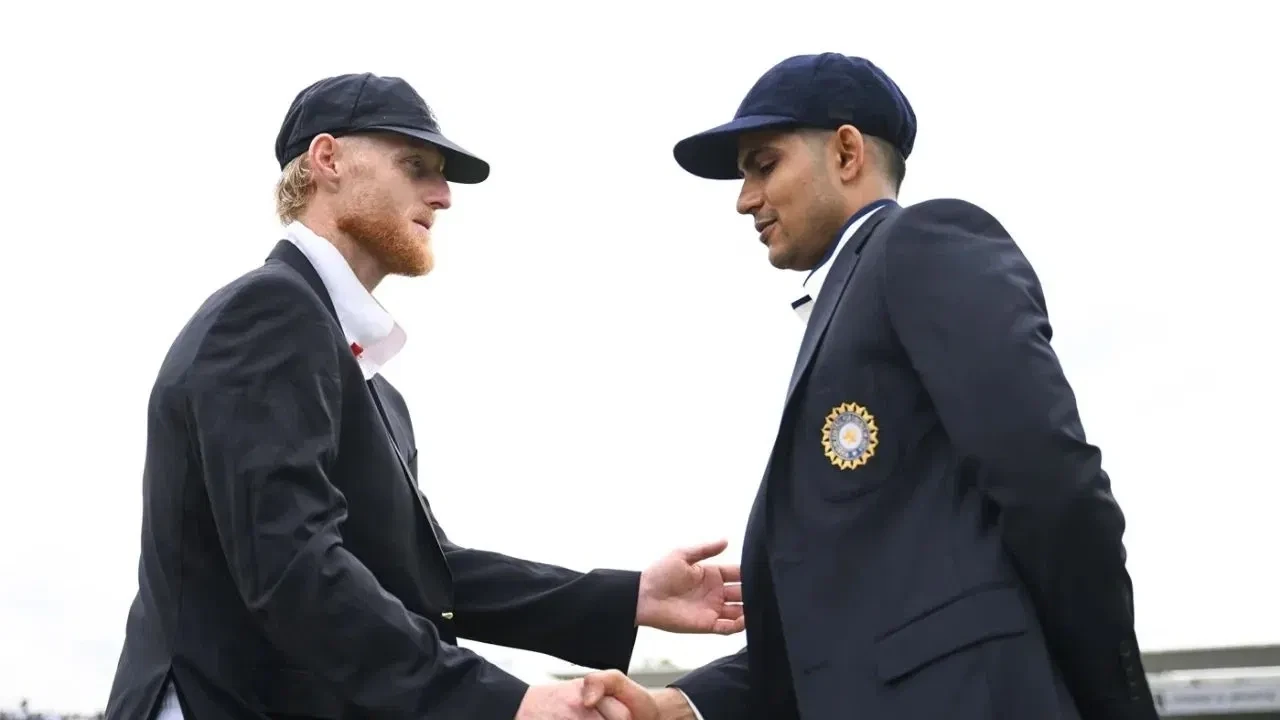A big controversy has hit the ongoing second Test of the Anderson-Tendulkar Trophy between India and England at Edgbaston, and it has nothing to do with batting or bowling, but the size of the boundaries.
England has come under the scanner for changing the boundary sizes to help their own style of play, famously known as ‘Bazball,’ at the Edgbaston Stadium.
The boundary ropes have mysteriously been pulled in to their minimum legal limit. It all started when the news spread about India picking two spinners, Ravindra Jadeja and Washington Sundar, for the ongoing second Test of the five-match Test series against England.
England accused of shrinking ground to kill India’s spin threat at Edgbaston
Ever since the news broke out, England captain Ben Stokes and head coach Brendon McCullum were reportedly in contact with the groundsmen and asked them to pull the boundary ropes in as close as possible, limiting them to the smallest size allowed by the ICC.
They wanted to make life harder for the Indian spinners and easier for England’s aggressive batters to find the boundaries at Edgbaston. According to a report by The Times UK, the match officials confirmed that no boundary on the ground is longer than 71 yards (64.9 meters).
The straight boundaries are just 60 meters, which is almost 30 meters shorter than what the ICC rules allow at maximum. The size was completely different from the last Test matches against the West Indies and Australia in the Ashes at the same ground, where the boundaries were longer.
What do the ICC rules say?
Meanwhile, England has clearly tried to reduce the impact of India’s spin duo of Ravindra Jadeja and Washington Sundar by pulling the ropes in at Edgbaston, but they haven’t technically broken any ICC rules, which would certainly hurt India and the fans.
According to the ICC’s official World Test Championship rules, “No boundary shall be longer than 90 yards [or] shorter than 65 yards from the center of the pitch.” On paper, England has stayed within that limit, but the rules also say, “The aim shall be to maximize the size of the playing area at each venue.” And that’s where the real drama begins.
At Edgbaston, the boundaries are far from maximized. They’re shorter than what fans and cricket experts saw in the last few Tests at the venue and surprisingly tight for a ground that can offer more. Adding fuel to the fire, the leaves the final call on boundary size to the host board.
The ICC rule reads, “Before the match the umpires shall consult with the home board to determine the boundary of the field of play.” That gives England complete freedom to shape the ground to their game plan.
Edgbaston groundsman exposes Ben Stokes and Brendon McCullum’s tactics
Even the groundsman admitted that they all did at the demand of the host team. Edgbaston’s head groundsman, Gary Barwell, stated, “There’s communication throughout … We give as much information as we can to suit what team we want to go for-and how we want to play our cricket as well.”
Even the former England all-rounder David Lloyd and former England pacer Steve Finn have also understood the ploy of the hosts, and they openly admitted it on-air.
Many have been calling this move unfair, as England are using home advantage in a way that goes against the spirit of the game to just make Indian spinners less effective and help their batters for aggressive batting.
